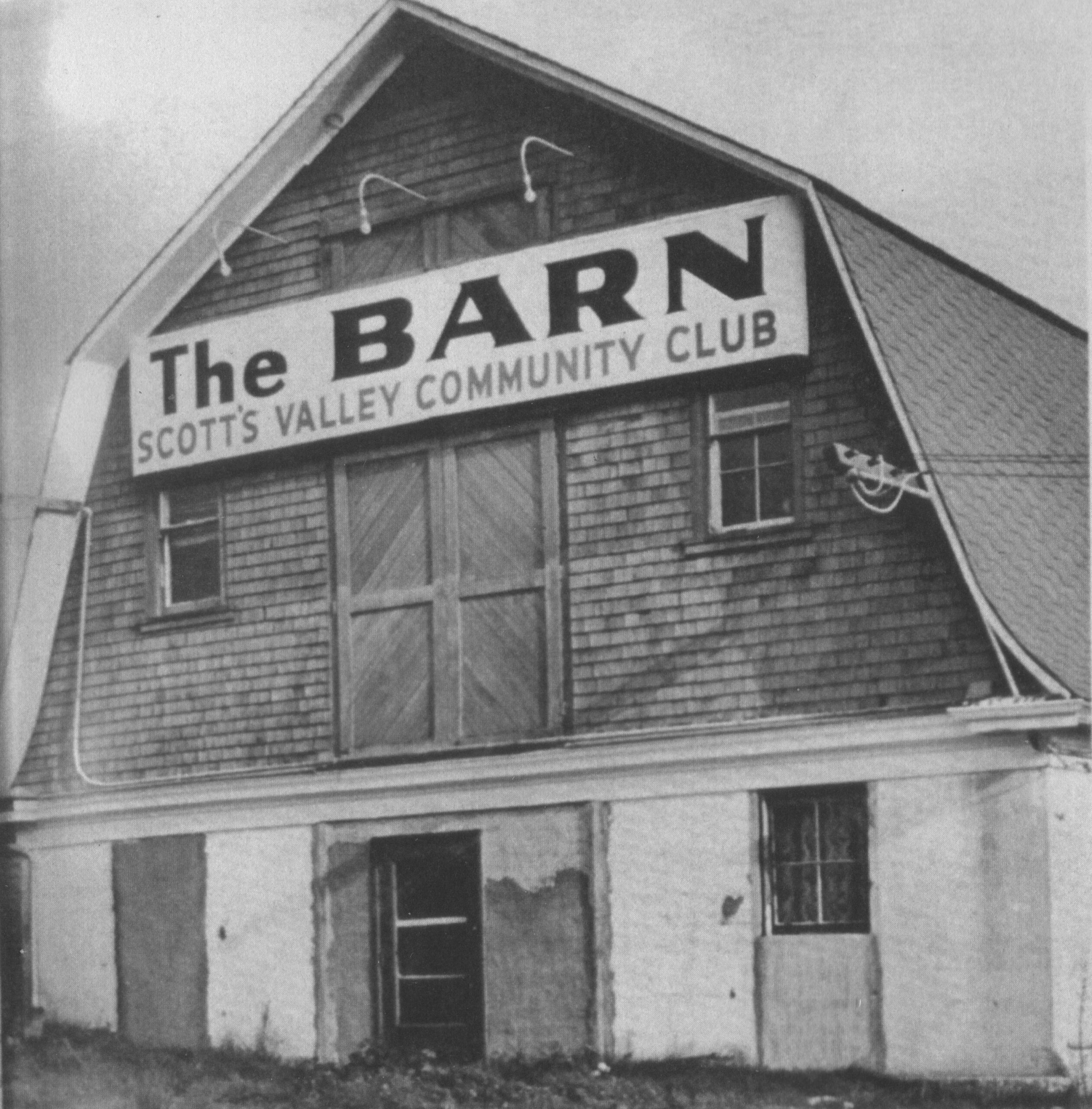A History of Scotts Valley Water
By Randall Brown
August 1958. The Scotts Valley Barn was practically empty on the night the residents were invited to learn about the upcoming water election. Engineers, county officials’ consultants, and public-relations men nearly outnumbered the ten interested citizens. There would be one question on the ballot, according to a spokesman: “Do you wish to buy a reserve water supply for posterity – a share in the Newell Creek dam project. Should you refuse to pass the measure, the right to the water will be lost forever,” he predicted. “Later you will have to deal with the San Lorenzo Valley county water district or the city of Santa Cruz for water.”
The proposal – to authorize a $175,000 bond to pay for a 12 ½% share (500 acre feet) of what would be known as the Loch Lomond reservoir – had already been thoroughly debated. The area’s two leading civic organizations were at odds. The Greater Scotts Valley Chamber of Commerce liked the idea and had appointed a committee to study the local water situation. Their belief was that small mutual water companies “would be glad to turn their distribution systems over to a local general water distribution agency.” The Improvement Club led the opposition. Its membership, mostly representing homeowners in the Lockewood Lane and Bean Creek neighborhoods, felt that their wells and stream sources were adequate and wanted no part of the deal. When 438 voters, one-third of those eligible came out a few days after the meeting they rejected the Newell Creek offer by a 2-1 margin.
The Sentinel regretted the outcome. “Growth of the Scotts Valley area has been observed for several years as the location of potential commuter residents from the Santa Clara valley. However, the ultimate development of Scotts Valley will be dependent upon available water and a sanitation system.”
In October, the state highway department decided to finish the job of replacing the three-lane bottleneck through Scotts Valley with a four-lane freeway. A variety of tourist-oriented enterprises along the old Highway 17 were threatened – motels, restaurants, gas stations, and fruit stands – but forward-looking businessmen recognized a new opportunity.
Realtor Harold Mitchell, who had developed numerous subdivisions in the San Lorenzo Valley, came to Scotts Valley in 1947. Purchasing a section of the large Frapwell Dairy, he laid out a new neighborhood, known as Santa Hacienda. “Harold didn’t lean much on ceremony or technicalities,” an associate recalled. “When ready to lay down a road he just walked in front of the bulldozer, guiding its path.” Mitchell also realized the importance of a reliable water supply, immediately incorporating a mutual water system for the subdivision. The venture was successful, but he had even higher hopes for the future. “The proposed freeway bypassing Los Gatos will bring us closer to San Jose and Santa Clara,” the realtor told a reporter. “We are to be the suburbs, the residential area of that industrial empire.”
In December 1960, the Scotts Valley Property Owners, a new civic association, sprang up when residents learned that county officials were about to allow the establishment of a 25-acre cemetery. The “Memorial Park” would be located near the freeway, adjacent to the expanding Santa Hacienda neighborhood. The protest united local residents – over 400 signed petitions urging denial of the permit. “Once the cemetery is dedicated,” their lawyer observed, “it is there forever.” Other groups joined the movement, including the Santa Hacienda Mutual Water company, which argued that the development would deplete the available water supply and interfere with the delivery of water to customers. Despite the uproar, however, the planning commission approved the plan.
Undeterred, the Property Owners demanded that the Board of Supervisors intervene. On a February night, at a special session held at The Barn, hundreds of citizens crowded in to drive home the point that “the people just do not want a park.” After a heated discussion, the supervisors bowed to popular opinion voting 4 to 1 to cancel the permit.
After the encouraging victory, the organization’s leaders moved on to other matters. In May 1961, President Agnes Lewis urged all voters in the area to attend a meeting where “the possibility of forming a Scotts Valley water district will be the subject of a panel discussion.”
(To be continued.)
Randall Brown is an author and historian. He lives in Boulder Creek and works in Felton.
Featured photo of the Scotts Valley Community Club Barn contributed by Randall Brown
The San Lorenzo Valley Post is your essential guide to life in the Santa Cruz Mountains. We're dedicated to delivering the latest news, events, and stories that matter to our community. From local government to schools, from environmental issues to the arts, we're committed to providing comprehensive and unbiased coverage. We believe in the power of community journalism and strive to be a platform for diverse voices.





